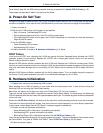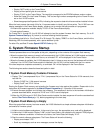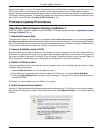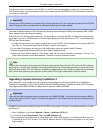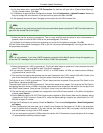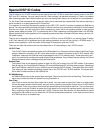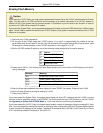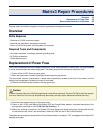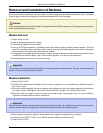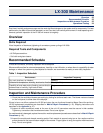
Special DSP ID Codes
The ID switch on an LX-DSP module may be used to force the LX-300 to erase flash memory areas in the DSP,
EXP, and ELC modules. You may need to do this if flash memory has become corrupted, or if there is a problem
after uploading system flash. Both situations are rare, and erasing flash memory is not required in normal operation.
Try the Erase Flash commands first as they will allow you to erase and then replace flash files without requiring a
serial connection to re-load system and ELC flash files.
It is important to know that the operating system for the DSP, EXP, and ELC modules is loaded into RAM during
startup. You can erase the flash memory and the LX-300 will continue to run until power is switched off. If the firmware
files are not in flash, the next time the LX-300 is powered up, there will be no operating system to load and the
system status display will show “/EP\” to indicate that the LX-300 is operating from diagnostic code in the EPROM.
Normal operation will not be possible until the operating system has been re-loaded into flash memory and the LX-
300 power cycled.
There is also a diagnostic setting of the ID to force the LX-300 to run from EPROM. If you set the Frame ID switch
to 00, flash memory will be bypassed during the startup procedure and you will be running in EPROM mode. To
restore normal operation, return the switch to the proper ID and power cycle the LX-300.
There are four flash file locations that can be erased with an ID code setting on the LX-DSP module:
LX-ELC Flash
The LX-ELC Flash is the operating system for the Embedded Linux Computer that is the heart of the EtherTracks
module. When this is erased, you will not be able to make a network connection to the LX-ELC module. With
CueStation 4 there are four files that must be uploaded for the LX-ELC module to work. These are et-boot, etrx1,
etrx2, and a valid mixer configuration containing an Ethernet address. If any of these files are missing, the Frame
Status window will scroll a message listing the missing file.
System Flash
The System Flash is the operating system for each LX-300, and is stored in the LX-DSP module. If the system
flash is missing, the Frame Status will display /EP\ and the Watchdog LED will blink red and green. Please note
that if the ID switch is set to 00 or to an invalid id you will also get the /EP\ display. The system flash file is lx300.
This setting will also erase the operating system files in the LX-EXP and LX-VRA modules. The system flash
file for both of these modules is the lx300exp file.
NV RAM Settings
NV RAM is where some of the system flags are stored. These include the boot-from-flash flag. The erase com-
mand may not have an effect on systems running CueStation 4.
User Flash
User Flash is where the Auto Start project file is saved. You may need to erase this if there is a large project
file that has been saved to flash memory and you wish to upload a new project file that will not fit until the old
one is erased. There is an external subcue that will erase this area that should be tried first. The only time when
you will have to use the ID switch to erase User Flash would be if a project file has been saved, and set to Auto
Start, containing a logic flaw that crashes the LX-300. These are rare, but possible. It is also possible to create
a project file that contains a cue to reboot the LX-300 that automatically executes. In this case you would have
a LX-300 that was in an endless loop.
16
Special DSP ID Codes



